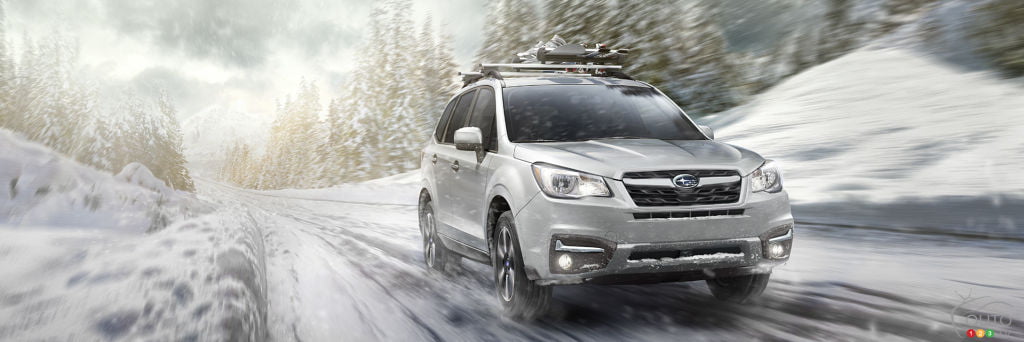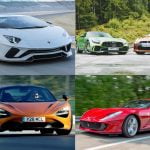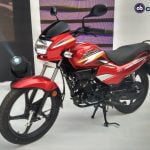
For years, Japanese automaker Subaru was seemingly led by engineers whose main focus was their vehicles’ mechanics and the durability of their flat-four cylinder engine. Far behind on the list of priorities came styling, driving pleasure and passenger comfort. Things have progressed over the years, slowly at first and then more quickly, to the point where the current lineup of Subarus is greatly appreciated by its many fans thanks to more pleasing aesthetics and improved refinement all around.
The company produces several vehicles with practical applications above all, and which could more or less be considered SUVs. According to the norms widely accepted for this designation, of course, only the Forester is a true sport utility model, the others being essentially all-wheel-drive-equipped crossovers. There’s also the upcoming Subaru Ascent, soon to hit the market. Larger and fitted with three rows of seats, it could also qualify as an SUV. But for the moment, the Forester stands alone in this segment for Subaru.
Unlike many of the category’s other entrants, the Forester makes no attempt to attract buyers with a comely silhouette or attention-grabbing mechanical components. This all-purpose vehicle simply does what’s asked of it, and does it well.
More aggression in 2018
And yet. Not so long ago, Subaru products distinguished themselves in part by the astonishing banality of their styling and design. Thankfully in the past few years these areas have seen gradual improvement, and today’s Forester is no longer the anonymous people/gear mover it once was.
Approach the 2018 Forester, in fact, and the initial vibe you get from its front end is one of aggression. As with most of the automaker’s vehicles, the front grille is criss-crossed by slats with at their centre the Subaru badge. The most dynamic element, though, is clearly the oversized bumper, the mid-section of which features a prominent black beam overhanging an air vent, and the extremities of which incorporate fog lights, not to mention the sports car-inspired openings. The lateral walls are garnished with bulges down low and embossed wings up high. Most notable about the rear section, meanwhile, are the chrome-framed taillights that stretch out onto the wings. The overall look is still sober, but there are enough style elements to provide the Subaru Forester with a little more dynamism.
The interior was conceived and assembled with care, and the quality of the materials is frankly excellent. On the other hand, the upper part of the display screen is surrounded by rectangular ventilation ducts, the sides by different instrument buttons and the bottom by three command knobs. It’s practical, all right, but it makes for a pretty busy, encumbered space. At the top of the dashboard sits a digital data centre, which drivers can configure to provide relevant info regarding the car’s performance, mechanical state and so on. Also worth noting is that the spokes of the steering wheel incorporate command buttons for the audio system, phone system, intelligent cruise control and a few other functions. Overall, the cabin is spacious and comfortable.
Hooray for the turbo!
It can be a bit complicated to find one’s way through the panoply of models and packages offered by Subaru. For starters there’s the model powered by a 2.5L boxer engine generating 170 hp and 174 lb-ft of torque, the only engine that can be wedded to the 6-speed manual gearbox, and only offered with the 2.5i and 2.5i Touring versions. All other trims, including the 2.0XT, come with the CVT transmission. In our view, the manual transmission lacks precision, while the CVT is one of the best of its type available on the market. One constant through all Forester versions is, unsurprisingly, all-wheel drive, a Subaru trademark.
The engine of choice is a 2.0L 4-cylinder turbo (2.0XT models). Borrowed from the WRX, it can deliver 250 hp. I recommend it strongly, not only because of its excellent acceleration and pick-up capabilities, but also because it allows the Forester to transport five occupants without highway passing becoming an adventure – a shortcoming the base engine suffers from.
As with most of its competitors, the front and rear suspensions are independent, while all four wheels feature disc brakes. It’s important to point out as well as that Subaru makes cars that are very safe. For proof of that look no further than the latest rankings by the Insurance Institute for Highway Safety (IIHS) in the U.S., which gave four 2018 Subaru models its very highest safety rating. A Ring-Shaped Reinforcement Frames body technology protects occupants inside an ultra-rigid protective cocoon. As well, several versions of the 2018 Forester offer the available EyeSight system, which includes adaptive cruise control, pre-collision braking, pre-collision throttle management and lane departure and sway warning.
Winning qualities
The first generation of the Subaru Forester came in a decidedly dull outer shell, contenting itself with being a practical all-purpose vehicle. Over the years things have changed for the better. The cabin is more luxurious and contemporary, its amenities the equal of any rival. What’s more, the sound insulation has lately been noticeably improved; that distinctive Boxer-engine sound that turned off some motorists is now strongly filtered.
We had the chance to take the wheel of two Forester models with different engines. In the Forester 2.5i, acceleration was acceptable but started to suffer with four people aboard. The vehicle handles itself well, for sure, but doesn’t shine in terms of the driving experience. The 250-hp Forester 2.0XT is a whole other story. Its reactions are almost sporty, pick-up is muscular and it’s possible to take it off-road with several occupants aboard without it slowing down appreciably.
Not that there aren’t a few irritants. The data centre at the top of the dashboard, for instance, is not always easy to consult; the rear seat backrests are not necessarily all that comfortable; and the chassis could benefit from greater rigidity when the car is cornering. The latter issue is a longstanding one in the case of the Forester, and we have to hope the next generation will benefit from a more rigid platform.
These hiccups notwithstanding, the 2018 Subaru Forester, which starts at $25,995, offers pleasing homogeneity, it is eminently practical and its interior is extremely well-conceived and executed. Here’s hoping for a few further improvements to the driving dynamics next time around.
[“Source-auto123”]





